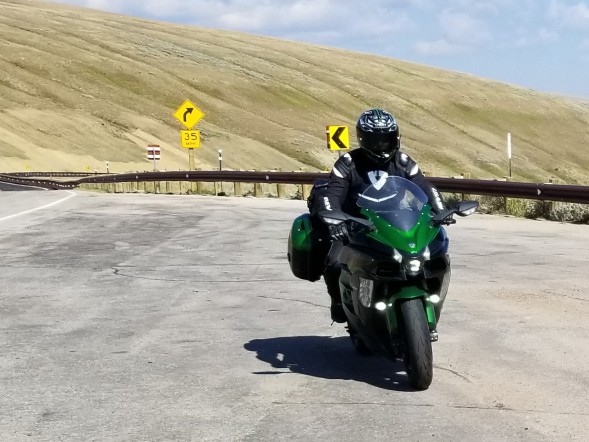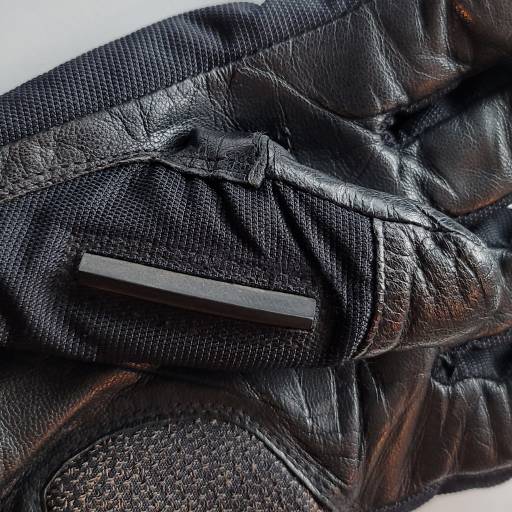Five Qualities to Look For In Sport Touring Gloves
What’s the last thing a motorcyclist puts on before a ride and the first thing they take off after? Answer – their gloves. Gloves are the finishing touch for a well-dressed rider. Well chosen gloves add safety, comfort, and even a dash of style. But what kind of glove makes sense for sport touring rides that cover hundreds of miles in all conditions, day after day?
Here are five qualities to look for in your next pair of sport touring gloves.
Style That Works
Start by choosing a style that works for what you ride and the way you ride. You have two choices – gauntlet style, also known as long cuff gloves, and short cuff gloves. Each has its place. Short cuffs, as the name implies, have less reach over the wrist, usually closing at the wrist bone. Gauntlet style gloves by contrast extend well past the wrist providing better weather protection for touring rides and additional safety on the track; (but not both qualities in the same pair of gloves).

Short cuffs are a good choice for warm weather. With less overall coverage and made with breathable material, they are comfortable in the heat yet still protective. Waterproof short cuffs also work well in rainy weather when tucked up inside a jacket sleeve to prevent water from rolling into the glove.
The second option, gauntlet style gloves, are the best choice for aggressive riding and for cold weather. But keep in mind cold weather gauntlet gloves are not constructed in the same way as those made for track use. A gauntlet glove designed for touring has less protective armor and lighter padding, as well as additional slack around the opening to accommodate jacket sleeves. The same style made for track use will feature a tighter fit, more armor and padding, plus sturdy straps at the wrist and a second strap or closure at the opening to keep the glove on during a crash.
Each style of glove has its place depending on rider, road, and weather. Experienced riders carry both styles to accommodate whatever road and weather conditions they come upon.
Durable Material
Motorcyclists have two broad choices for glove material – leather and synthetic. Leather scores well for durability and comfort while synthetics are better in the rain and less expensive. A good number of gloves on the market use a combination of materials. These so-called hybrid gloves often deliver the best of both worlds.
Goatskin is the most commonly used leather. It is durable yet soft and compliant for all day riding comfort. Gloves made with cowskin and suede are also popular. Leather gloves take some time to break-in, but once done they are comfortable and hold up better than synthetics in a crash. Before purchasing a pair of leather gloves, read the product description carefully. For cost reasons, some manufacturers may use man-made (synthetic) leather.
That brings us to synthetics, or what manufacturers and retailers often call “textiles”. In reality, textiles used in virtually all sport and sport touring gloves are made from synthetic ingredients rather than natural fabrics. Gloves made with synthetic material are cost effective to manufacture and have desirable properties including comfortable fit without a break-in period and better performance in wet weather. Nevertheless, a good pair of leather gloves will outlast gloves made with synthetic material.
Superior Protection
Gloves are first and foremost about protecting the rider in the event of a crash. A well designed and constructed glove, regardless of material, can make the difference between sustaining only minor injury in a crash and a more consequential outcome.
The European Union defined protection standards for motorcycle gear and specifically for motorcycle gloves. Like helmets, gloves must pass a battery of tests before claiming they meet CE standards. The most significant tests cover palm abrasion resistance, knuckle impact protection, seam strength, and the ability to avoid being pulled off in a crash. Look for a CE product tag to confirm that the glove meets those standards.

Gloves are certified as Level 1 or Level 2 compliant, where those earning Level 2 have met significantly higher test criteria. In actuality, manufacturers submit street gloves and consumer-grade track gloves for Level 1 testing at best. Only high-end race gloves are put through Level 2 testing.
The United States and Canada do not require gloves to undergo testing of any kind. Consequently, the CE standard is the only objective and independent measure of protection buyers can use to make an informed decision.
In summary, a high quality pair of gloves made from good material should protect the rider’s palms, knuckles and fingers, and to a lesser degree their wrists. But what does that level of protection look like?
First, palm protection means the glove has a sufficient layer of abrasion-resistant material across the palm, particularly near the wrist. Look for gloves with extra material here and ideally a hard slider on the outside palm opposite the thumb. Knuckles should have protective armor as well. Finger joints may have added padding and reinforcement but not to the same degree as the knuckle area. And lastly, race and track gloves should include an extra slider on the top outer wrist area.
One more point about hand protection – avoid fingerless motorcycle gloves. To understand why ask anyone who’s gone down while wearing a pair. And if that’s not enough to convince you, talk to the surgeon who cleaned up the mess.
Comfort & Convenience
It’s more or less a universal truth that when something is not comfortable it won’t get worn. Consequently, it’s most important to choose comfortable gloves. And the best way to do that is to try on several pairs at your local motorcycle shop.
Look for gloves that allow a full range of finger movement. Try reaching around an imaginary clutch and brake lever. Stretch the thumb out to manipulate turn signals and other controls. Touring gloves should have no trouble here, but a more aggressively designed track glove might make basic motions more difficult.

In terms of fit, fingers should lightly touch the end of the glove without putting pressure on the fingertips. The fit around the hand should be snug but not tight. Likewise, wrist openings should be snug but sufficient to comfortably pass a hand through. Use the manufacturers sizing chart for a proper fit. But again, try a few pairs at your local shop to find the size that works best for you.

Beyond protection, gloves can also add convenience to a ride. Look for gloves with touchscreen friendly fingertips. Surprisingly, even with so many onboard screens not all gloves have this feature. Second, for those who ride in the rain, and sooner or later that’s all of us, gloves with a built-in squeegee on the left thumb or forefinger make wiping the visor a snap.
Fair Price
The final consideration comes down to price – how much should one spend on a good pair of motorcycle sport touring gloves? The short answer is somewhere between $100 and $150. Well-known motorcycle apparel brands, and many of the lesser known ones too, offer a wide selection of quality products in this price range. That includes both short cuff and gauntlet style gloves, made with leather and synthetic material, designed for touring and track use.
To be fair, one can always spend more; and for an exceptional pair of gloves why not. It’s equally possible to spend less. And if the quality is there go for it. But be cautious; that bargain basement gear might seem like a good deal right up to the moment you need it most.
Gloves For Every Occasion
Gloves are essential protective gear on any ride. They increase comfort and reduce the risk of serious injury in a crash.
Sport touring riders, knowing they will encounter all kinds of weather, carry along several styles. Breathable mesh gloves for warm afternoons and heavier short cuff or gauntlet gloves for cool mornings and rain. And sometimes even a pair of sturdy track gloves for those intoxicatingly seductive roads.

by John DeVitis, Editor and Publisher
John DeVitis, Editor & Publisher of American Sport Touring, has been riding and writing about all things motorcycling for decades, with a special focus on sport touring motorcycles. He possesses an uncanny knack for discovering little-known roads in picturesque locations across the United States and Canada, turning riding adventures into stories that inspire readers to explore. These experiences, both on the road and in digital publishing, including years at MSNBC.com—have shaped strong editorial principles and a clear vision, assuring readers of high-quality content they can trust.
Did we hit the mark?
Tap thumps up or thumbs down to send your comments to the editor.
Your feedback helps improve American Sport Touring. We do not use your information for any other purpose.
Please read our Privacy Policy.







